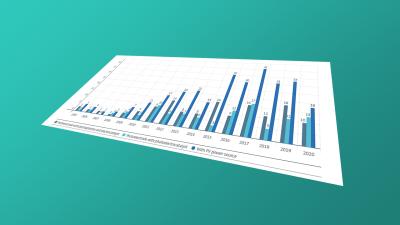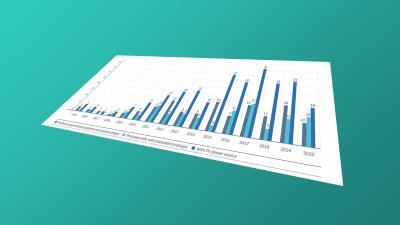Calendar systems and their role in patent documentation
The Gregorian calendar has been used for centuries in most countries around the world, and so we often forget that some countries use different calendars. These create additional challenges for patent searchers - for example when checking filing or publication dates or when searching using numbers. Very often, a non-Gregorian year is included as an element of the number format and must even be used in public search tools.
In this series, we'll explore several jurisdictions in which non-Gregorian calendar systems are used. We'll look at the challenges of searching data from these jurisdictions and give you some tips and tricks on how to tackle them in your daily work. In this issue, we begin with the Japanese imperial year.
Part I: Japanese imperial years
Background: imperial year in East-Asian culture
East Asian thinking has been heavily influenced by the Chinese, and this includes the traditional way of identifying and numbering years.
The Chinese emperor was not only the highest political instance but was also believed to have close ties to heaven. In a sign of this political and spiritual power, every new emperor would choose an era-defining slogan or motto, consisting of two Chinese characters, for his reign. This motto was so closely associated with the emperor that it always had to be used to refer to him or his reign instead of his own first or family name. Whenever a new emperor ascended the throne and instituted a new era with a new motto, the year would be reset back to year one.
As the last Chinese emperor abdicated long before a patent system was introduced in China in 1985, this method of counting and referring to years did not find its way into Chinese patent documentation.
However, this system of counting years was adopted by several other East Asian countries, including Japan, which of course still has an emperor. Even now you'll encounter "imperial year" everywhere in Japan, especially on official documents. This consists of the era name chosen by the emperor, followed by the year, with year "1" marking the first year of an emperor's reign. For example, the current emperor Naruhito ascended the throne in 2019 (year 1) and chose the motto Reiwa ("beautiful harmony"). This year, 2022, is Japanese imperial year "Reiwa 4".
Imperial years in Japanese patent documentation
International conventions for patent application and publication numbering, including the use of four-digit Western years, were introduced in 2000. For a while, however, imperial years were still being used to refer to dates of legal events. Now, since the launch of the Japan Patent Office's J‑PlatPat patent information platform, and at least in the English language sections, dates are now shown in Western years.
Even so, when doing prior-art searches, you will still come across Japanese imperial years. These are shorter (maximum two digits) and, depending on the database, prefixed with a one- or three-letter abbreviation of the era name.
The Japanese patent system dates back to the 19th century, but let's now look at an example from the last hundred years and the following eras:
- Shōwa (SHO, S) 昭和 ("brilliant peace") - Hirohito (emperor from 1926 to 1989)
- Heisei (HEI, H) 平成 ("creating peace") - Akihito (emperor from 1989 to 30 April 2019)
- Reiwa (REI, R) 令和 ("beautiful harmony") - Naruhito (emperor since 1 May 2019)
Example
Here you can see the Japanese publication of an application. The kind code A is easily recognisable, and the publication (INID code 43) and application date (INID code 22) use both Japanese imperial and Western years. The application number (INID code 21) and publication number (INID code 11), however, only use imperial years - see highlighted sections. These consist of the Chinese letter for the era name followed by a number, in this case "4" and "5" respectively. Let's look at how you can tell during which emperor's reign this was applied for and published.
Matching the symbols from our list of eras, we can see that the document was published in the fifth year of the reign of Emperor Heisei (the official way to refer to Emperor Akihito). So you can now find this document using the imperial year: H05-182639.
This conversion table should make your life as a patent searcher a bit easier:
|
Shōwa + 1925 = Western year |
For the year 1989, use either the last year Shōwa or the first year Heisei, i.e. Shōwa 64 = Heisei 1.
The year 2019 up to 30 April is Heisei 31 and, from 1 May, Reiwa 1. However, Western years were already in use by then, so there is no need for conversion here.
Further reading
Numbering system - Japan (EPO Asian patent information)
INID code overview (WIPO)













